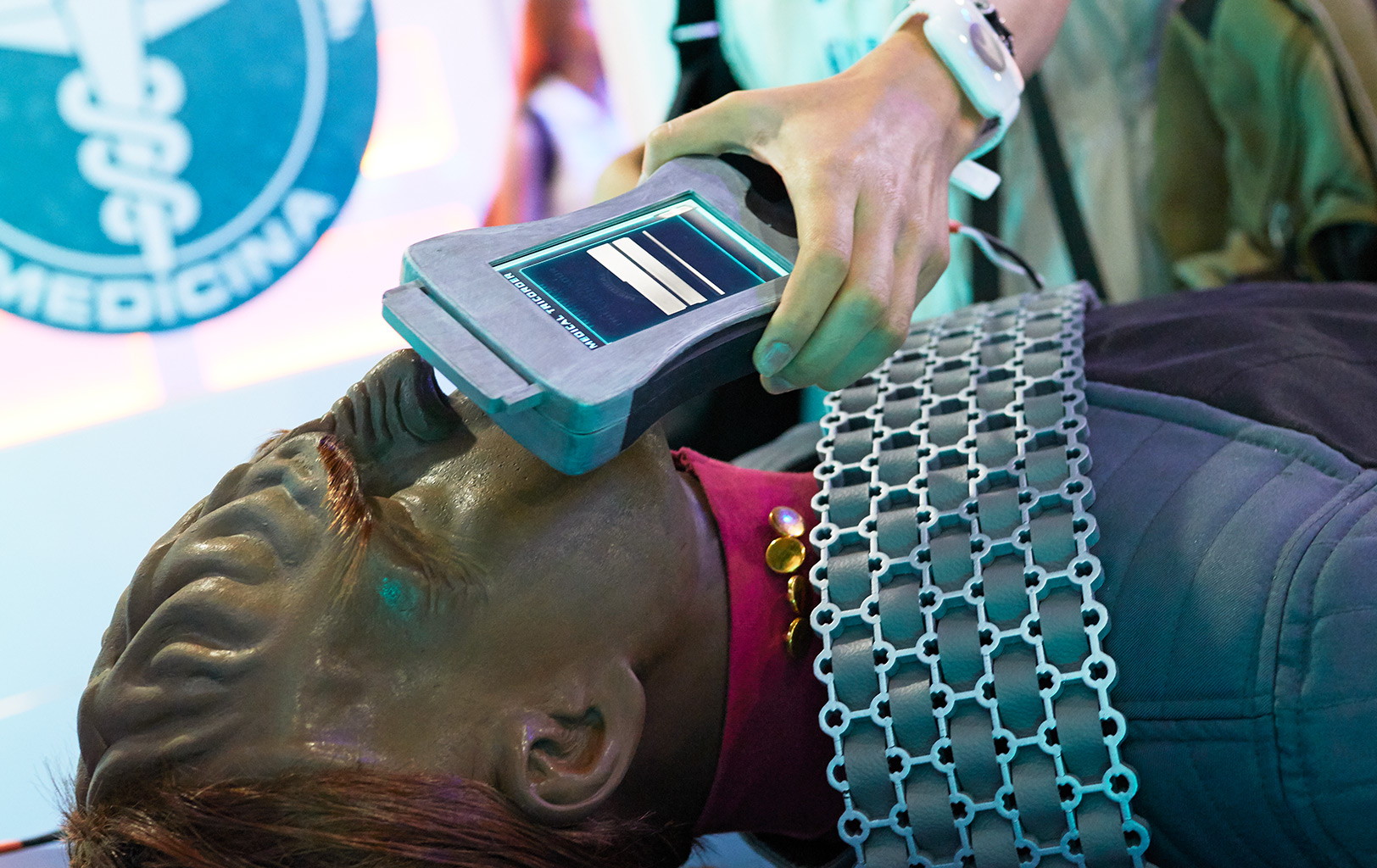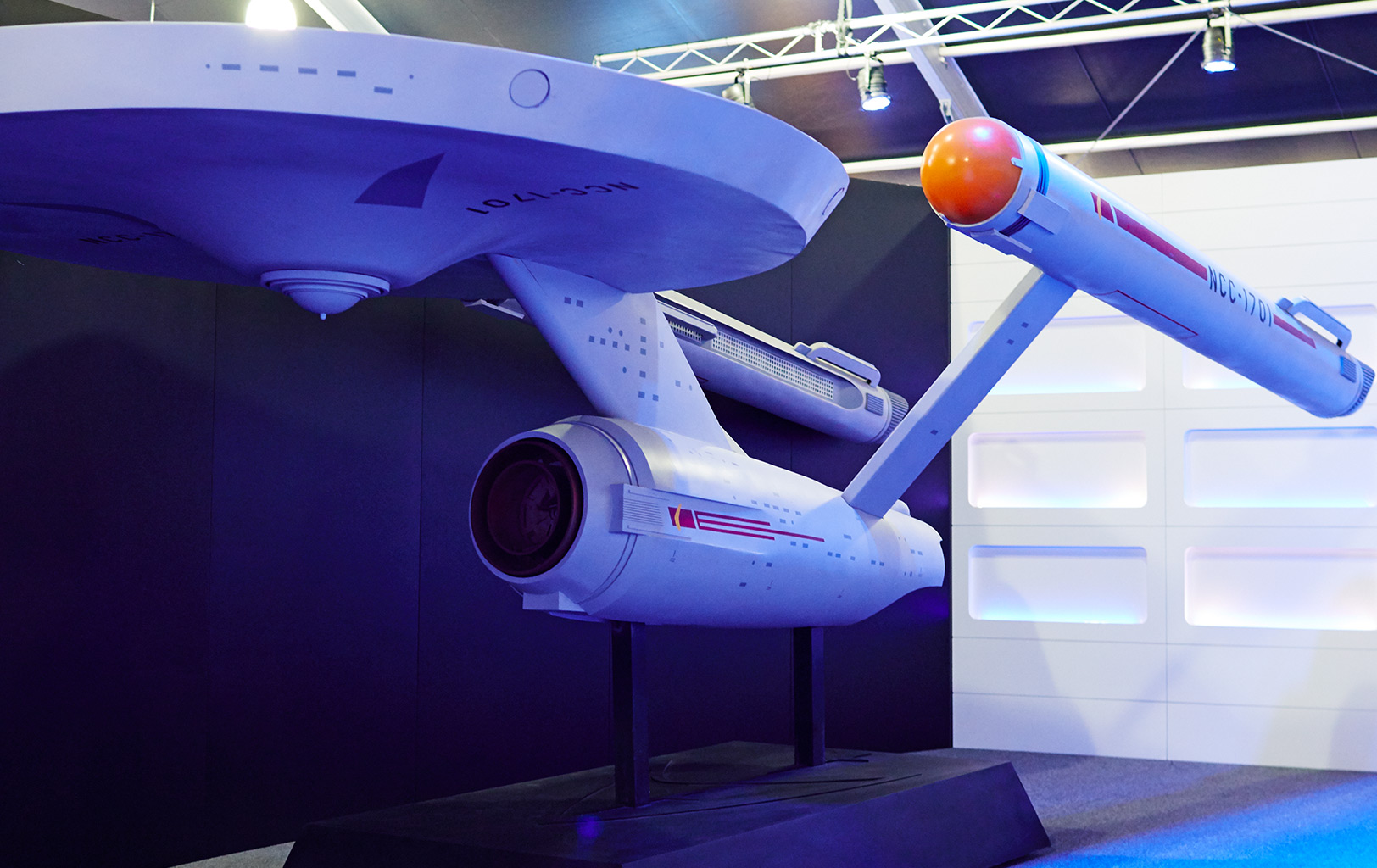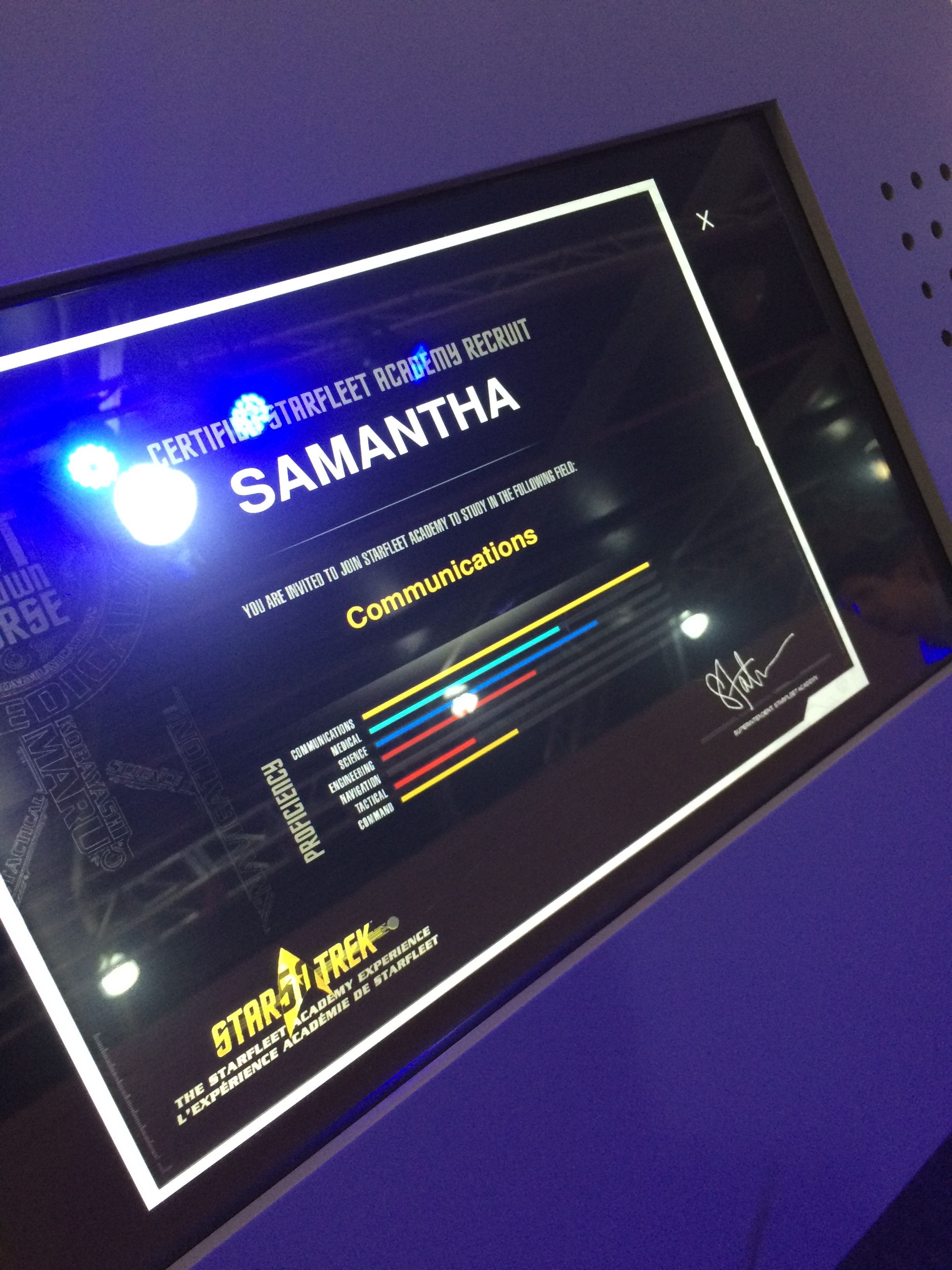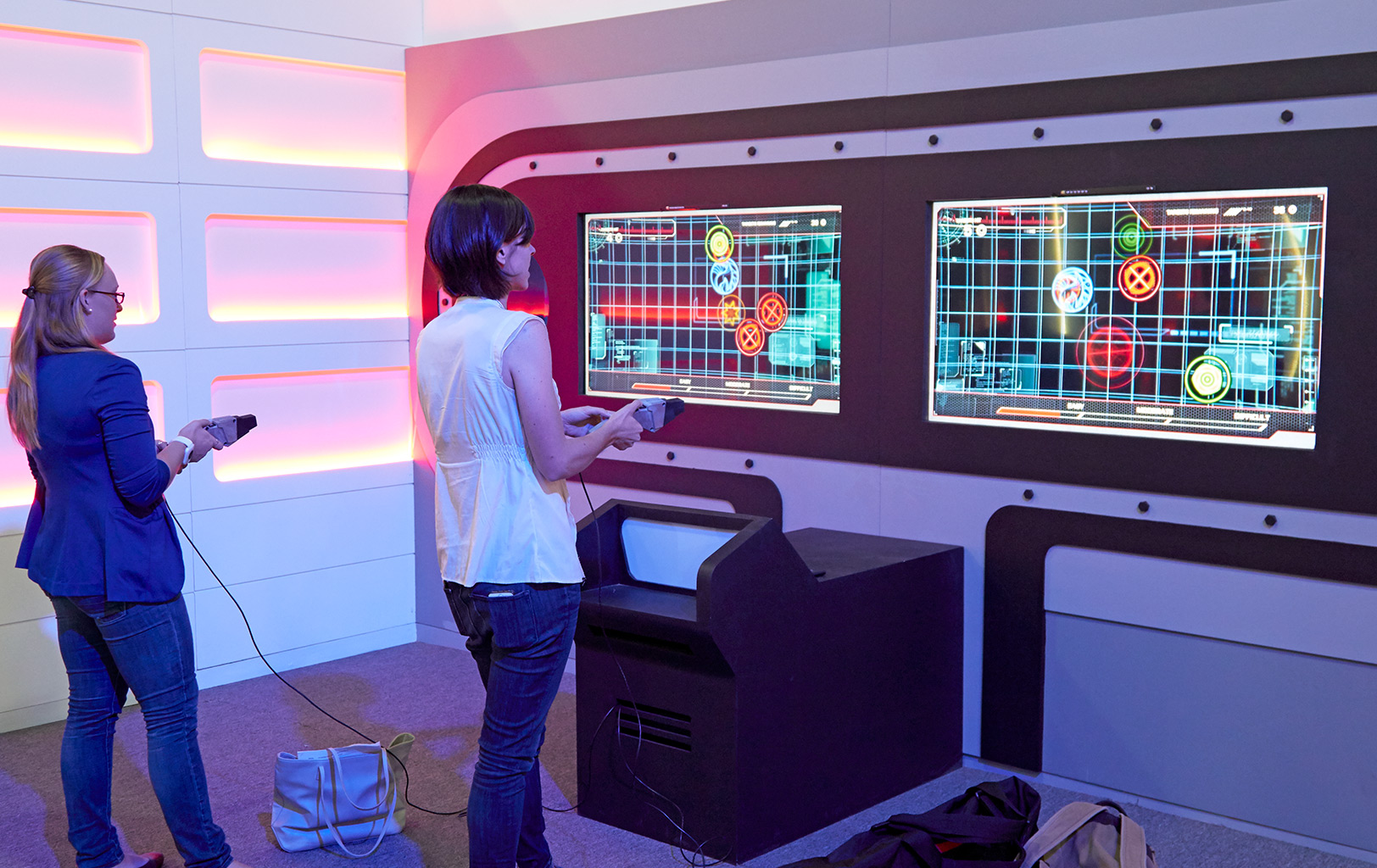New 'Star Trek' Exhibit Lets You Join Starfleet Academy

NEW YORK — Have you ever wondered what it might be like to train at the same institute as the heroes of the "Star Trek" universe? Well, now you have the chance.
The new interactive Starfleet Academy Experience at the Intrepid Sea, Air & Space Museum here in Manhattan lets visitors test their aptitude in seven different specializations featured at the fictional academy: communications, medicine, science, engineering, navigation, tactical and command. Cadets learn to speak a little Klingon, use a medical tricorder and can even be "beamed up" (of course, there's no actual teleportation involved). And "Star Trek" fan or not, who doesnꞌt want to take a spin in the captain's chair?
Last month, Space.com attended a press preview event for the exhibit (which officially opened Saturday, July 9), and while I was not well-versed in "Star Trek" before venturing to Starfleet Academy, I left wanting to binge-watch every TV episode and movie. [See more photos from the Intrepid Museum's new "Star Trek" exhibit]
Much like Starfleet Academy of the fictional "Star Trek" universe, the exhibit allows cadets to sample each career path before assigning them to one that best suits their skills. Special wristbands track each visitor's progress in a series of exercises and quizzes placed throughout the museum.
There are several props from the live-action "Star Trek" series scattered throughout the exhibit, including uniforms, tricorders, phasers and a model of the USS Enterprise (NCC-1701) — the first iteration of the central starship of the "Star Trek" franchise.

At the medical station, cadets are asked to scan a Klingon patient using a medical tricorder, before making a diagnosis based on symptoms from the series registered by the device. Next, at the communications station, cadets take Klingon 101 and a "species selfie," where they can manipulate certain facial features, such as changing their ears or adding antennae, to resemble characters on the series.
At the science station, cadets encounter spaceship malfunctions and get to choose which nearby planet to crash-land on. Later, at the navigation station, cadets have to pilot their spacecraft's course around planets, mine fields and asteroids to safely make it to the warp zone.
Breaking space news, the latest updates on rocket launches, skywatching events and more!

Cadets of the Starfleet Academy Experience get to test their hand at one of the most iconic of "Star Trek" technologies: the phaser. Aiming a phaser at various moving targets on a screen is designed to test oneꞌs tactical skills, and based on my score, I am not well suited for the frontlines.
The last part of the exhibit features a re-creation of the Enterprise-D bridge, complete with a captain's chair. Here, a cadet's command skills are put to the test with the famous (to Trek fans, at least) unbeatable Kobayashi Maru exam. This simulated exercise tests how a cadet would handle no-win situations, such as helping a distressed civilian vessel in the Klingon Neutral Zone, inevitably violating a treaty between the Klingons and Starfleet and risking an all-out war, or just leaving the vessel to an uncertain fate. Since I was able to save only 65 crewmembers from the hypothetical vessel in distress, I would not want to sit in the captain's chair during a rescue mission.
While not all the exercise stations and interactive activities were fully operable when I attended the event, my performance during training showed that I was best fit to study communications at Starfleet Academy – unsurprisingly.

From fiction to science
Throughout the exhibit, visitors are immersed in "Star Trek" history and information about how the TV show has shaped present-day culture and technology. The universal translator, for example, is a futuristic communication tool inspired by old flip phones.
Space.com spoke to former NASA astronaut Mike Massimino about how "Star Trek" has influenced the space program today.
"To me, that's what science fiction did — it turned into science fact. This show came out in the '60s and the space program was much different back then," Massimino told Space.com. "Now, 50 years later, the space program has become more like what you see in 'Star Trek' — different genders, multinational, and a lot of the technology that was predicted in the show is now available to us."

George Takei, who played Hikaru Sulu, a lieutenant commander in the original "Star Trek" TV series, was also present at the press event. As a Starfleet alumnus, Takei said he hopes that the Starfleet Academy Experience at the Intrepid Sea, Air & Space Museum continues to educate and inspire the next generation of space explorers.
"We are today — in the year 2016 — living in a science fiction world," Takei told Space.com. "We are animals of imagination, innovation and invention — we create our future. We imagine the unimagined way out there in space and that becomes an inspiration to today's scientists, researchers and inventors."
With "Star Trek" celebrating its 50th anniversary this September, we think a visit to the Starfleet Academy Experience would be a perfect way to commemorate the iconic franchise.
For more information on the Starfleet Academy Experience, visit the Intrepid museum's website here.
Follow Samantha Mathewson @Sam_Ashley13. Follow us @Spacedotcom, Facebook and Google+. Original article on Space.com.
Join our Space Forums to keep talking space on the latest missions, night sky and more! And if you have a news tip, correction or comment, let us know at: community@space.com.

Samantha Mathewson joined Space.com as an intern in the summer of 2016. She received a B.A. in Journalism and Environmental Science at the University of New Haven, in Connecticut. Previously, her work has been published in Nature World News. When not writing or reading about science, Samantha enjoys traveling to new places and taking photos! You can follow her on Twitter @Sam_Ashley13.
